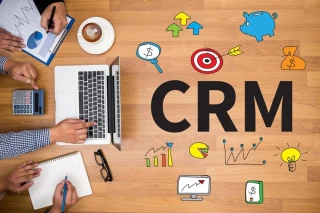
Introduction:
Migrating your CRM system to HubSpot can be a game-changer for your business, streamlining your sales, marketing, and customer service processes. However, a successful CRM migration requires careful planning and execution to ensure a smooth transition. In this article, we present a comprehensive HubSpot CRM migration checklist to guide you through the process. Whether you’re working with a HubSpot Design Agency or a HubSpot Development Agency, following this checklist will help you navigate the migration process efficiently and effectively.
Evaluate Your Current CRM System:
Before migrating to HubSpot CRM, evaluate your current CRM system to understand its limitations, strengths, and data structure. Identify any customization or data migration requirements to ensure a seamless transition.
Define Your Objectives:
Clearly define your migration objectives and identify the specific goals to the HubSpot Development Agency that you want to achieve with HubSpot CRM. This will help you align your migration plan with your business needs and measure the success of the migration.
Cleanse and Organize Data:
Cleanse and organize your existing CRM data by removing duplicate entries, updating outdated information, and ensuring data integrity. Proper data organization will make the migration process smoother and prevent issues in the future.
Map Data Fields:
Create a data mapping plan to map your existing CRM data fields to the corresponding fields in HubSpot CRM. Ensure that the data mapping accurately reflects your business requirements and captures all necessary information.
Plan for Customizations:
Identify any customizations or unique workflows in your current CRM system that need to be replicated in HubSpot CRM. Work closely with a HubSpot Design Agency or Development Agency to customize the CRM to match your specific business processes.
Test Data Migration:
Before migrating all your data, conduct test migrations with a sample data set to ensure the accuracy of the migration process. Identify and resolve any issues or discrepancies during the testing phase.
Communicate with Stakeholders:
Keep your team informed about the CRM migration process and its impact on their workflows. Provide training and support to ensure a smooth transition for all users.
Plan for Data Validation:
Establish a data validation process to verify the accuracy and completeness of migrated data. This may involve spot-checking records, running data quality reports, and seeking user feedback.
Integration and Automation:
Explore HubSpot’s integration capabilities and automate data flows between HubSpot CRM and other systems, such as marketing automation or customer support tools. This will enable seamless data synchronization and enhance cross-team collaboration.
Post-Migration Evaluation:
After the migration, evaluate the performance and effectiveness of HubSpot CRM in meeting your business objectives. Continuously monitor and refine your CRM processes to maximize its potential.
From Start to Finish: The Ultimate HubSpot CRM Migration Checklist
Migrating your CRM system to HubSpot requires careful planning and execution to ensure a smooth transition. To assist you in this process, we present the ultimate HubSpot CRM migration checklist that covers everything from start to finish. Begin by evaluating your current CRM system, defining your migration objectives, and cleansing and organizing your data. Next, map data fields, plan for customizations, and conduct thorough testing before migrating all your data. Communicate with stakeholders, integrate and automate data flows, and establish a post-migration evaluation process. By following this comprehensive checklist, you can confidently navigate the HubSpot CRM migration journey and unlock the full potential of this powerful platform.
Ensuring Success: Key Points in Your HubSpot CRM Migration Checklist
When it comes to migrating your CRM system to HubSpot, a well-structured checklist is crucial for a successful transition. Here are some key points to consider when creating your HubSpot CRM migration checklist. First, thoroughly assess your current CRM system and identify specific migration goals. Cleanse and organize your data to ensure accuracy. Map data fields accurately and plan for any required customizations. Conduct thorough testing before migrating your entire dataset. Communicate with stakeholders and provide adequate training. Lastly, establish post-migration evaluation processes to monitor performance. By incorporating these key points into your checklist, you can ensure a smooth and successful HubSpot CRM migration.
Comprehensive Guide: HubSpot CRM Migration Checklist for a Seamless Transition
Migrating your CRM system to HubSpot can be a transformative step for your business, but it requires meticulous planning and execution. To ensure a seamless transition, follow this comprehensive guide that outlines the essential elements of a HubSpot CRM migration checklist. Begin by evaluating your current CRM system and defining your migration objectives. Cleanse and organize your data, map data fields accurately, and plan for customizations. Test the migration process thoroughly before proceeding. Communicate with stakeholders, provide training, and establish a post-migration evaluation process. By following this guide, you can navigate the migration journey smoothly and reap the benefits of a seamless transition to HubSpot CRM.
Conclusion:
Migrating to HubSpot CRM can revolutionize your business operations, providing a centralized platform for sales, marketing, and customer service. By following the HubSpot CRM migration checklist and partnering with a HubSpot Development Agency, you can ensure a successful migration and harness the full power of HubSpot CRM. Embrace this transformative tool, streamline your processes, and enhance your customer relationships to drive business growth and success.


